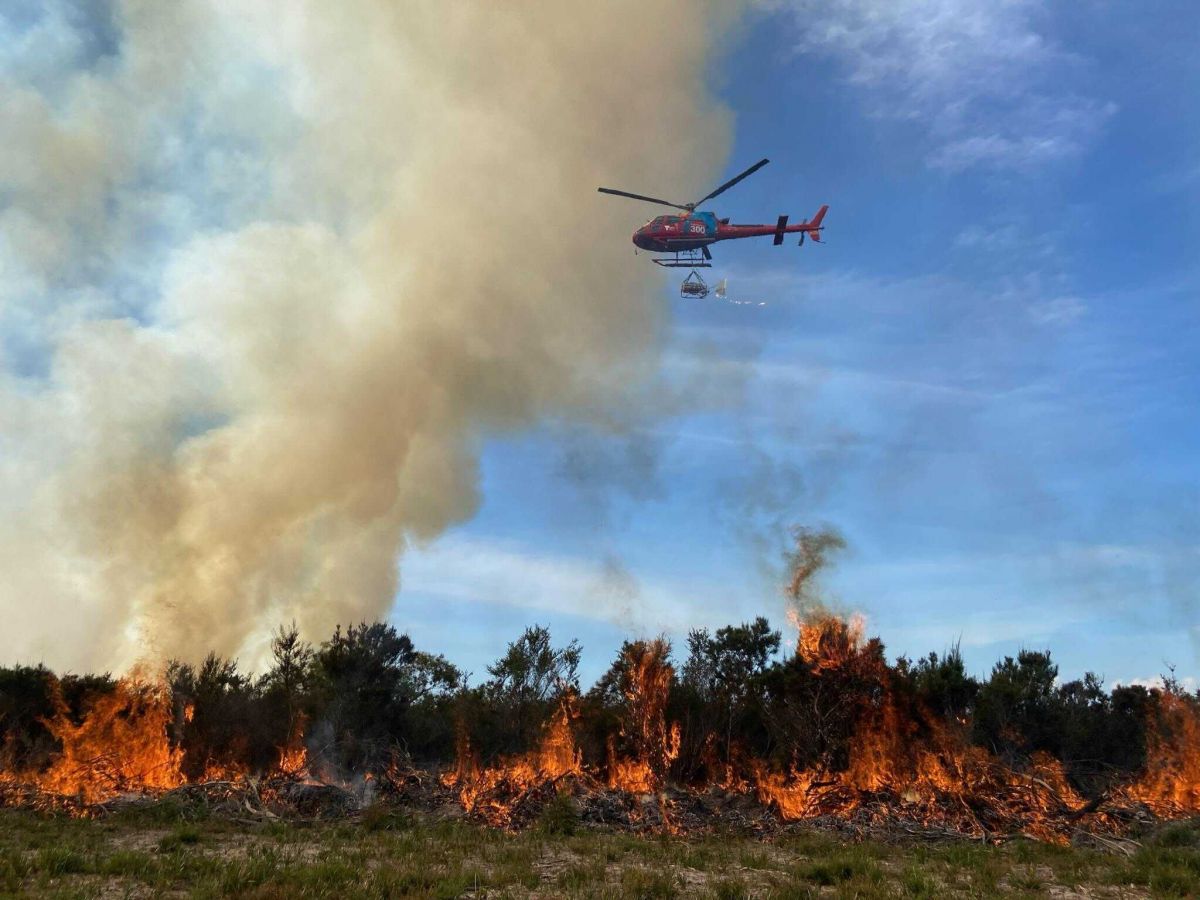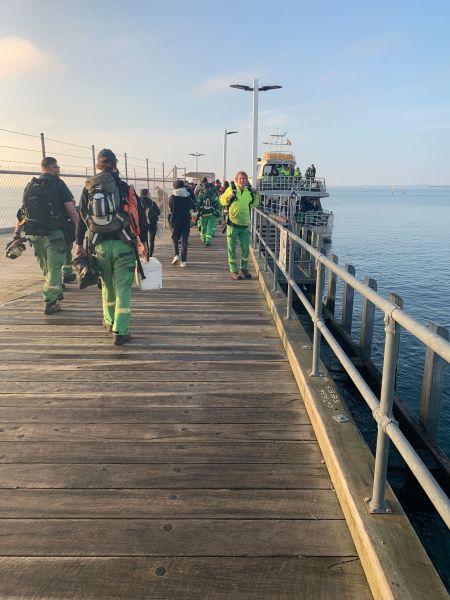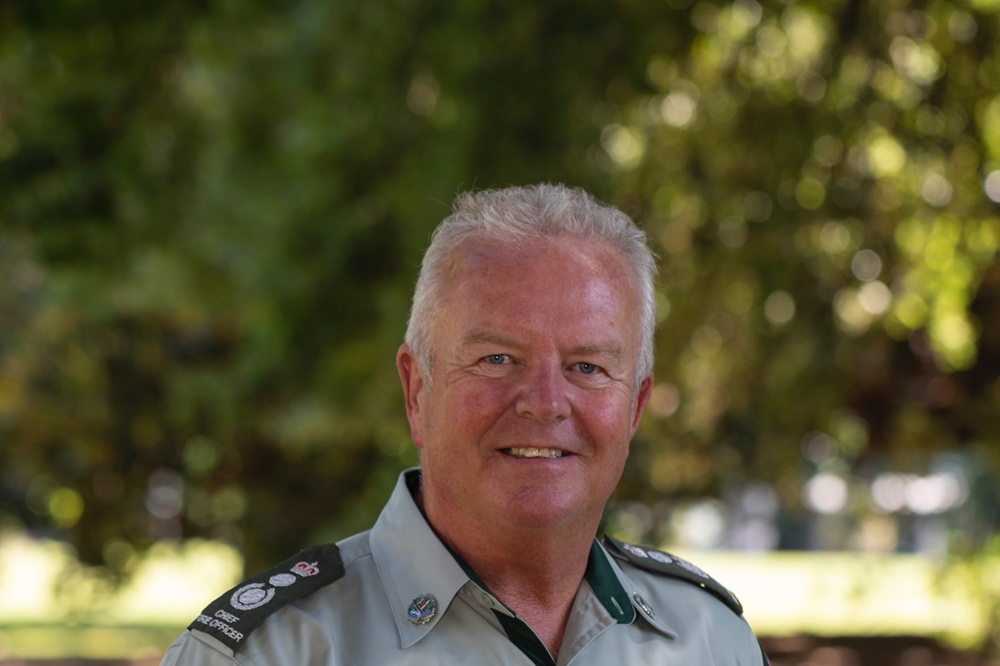Victoria’s largest island, French Island in Westernport Bay, is a haven for native plants and animals.

However, the isolation that allows native plant and animal communities to thrive on the island also poses challenges when it comes to undertaking planned burning to reduce the threat of invasive species to the island’s diverse flora and fauna.
A weed management program is in place to keep the introduced and invasive pine tree species Cluster pine (Pinus pinaster) in check to prevent it from outcompeting the native vegetation that provides habitat for the local native wildlife.
Planned burning is one tool that can be used to reduce the abundance of Cluster pine, and planned burns with objectives to remove Cluster pine were completed in 2018, 2021 and 2022.
Every year, Forest Fire Management Victoria (FFMVic) identifies priority burns that it aims to conduct if the conditions are right.
For a burn to go ahead, the availability of crew and equipment, the weather conditions, length of the burn window, and the importance of the burn to the state, region, and district must all be considered.
Planned burning on French Island requires several additional factors to be considered. These include habitat management because of the significant flora and fauna, pest plant control and asset protection, as well as the logistical challenges as the island is only accessible by passenger ferry and a small barge.
That was evident when planning a burn near the old Prison Farm on French Island earlier this year.
Acting Regional Fuel Management Coordinator for Port Phillip region Craig Woodbridge said completing a planned burn on French Island always presents challenges as everything must be taken onto the island.
‘There is a small Parks Victoria depot, and over summer FFMVic only maintains two slip-on units and one tanker on the island,’ Craig said.
‘Sourcing water-carrying vehicles from other depots can only be done once the bushfire risk of the area has lessened and are not needed at other priority burns.
‘Transporting vehicles, equipment and crews to the island is a slow process.
 ‘We are totally reliant on the barge and ferry to get us from Stony Point to French Island – and we also rely on the tides and weather conditions.
‘We are totally reliant on the barge and ferry to get us from Stony Point to French Island – and we also rely on the tides and weather conditions.
‘This time, we also had to factor in the scheduled maintenance for the barge which meant we only had a limited window of opportunity.’
Another issue faced by the planned burn team was the availability of an aerial driptorch that can be used to light a planned burn from the air.
‘The driptorch is a crucial part of the planned burn, but with a limited number available across Victoria, we had to wait until one became available,’ Craig said.
‘The vegetation to be burnt meant the aerial driptorch was the best method of ignition, as well as for maintaining the safety of the crews.
‘Alternate aerial ignition methods such as aerial incendiaries wouldn’t be effective in this heathland block.’
In the past, FFMVic had trialled different ways to transport and accommodate crews on French Island including staying in tents and even at the infamous French Island prison.
However, over time the burn coordinators have been able to finesse the model of bringing crews on and off the island each day and night.
‘We have worked out that it is more efficient for the crews – about 60 firefighters – to catch the ferry to French Island each day of the burn and return to the mainland each night, only leaving a small crew on the island to monitor the burn until about midnight when they are returned to the mainland courtesy of the Hastings Coastguard,’ Craig said.
FFMVic crews were supported by the Country Fire Authority (CFA) with tankers from Narre Warren North, French Island and Noble Park brigades and Commanders and volunteers from CFA District 8.
In all, 24 appliances including dual cabs, bulldozer, slip on units, ultralight tankers, burn mix trailer, uni-mogs, and tankers from both FFMVic and CFA were transported onto the island over a two-week period.
This planned burn and others on the Island are essential for the protection of the 580 indigenous plant species, including some of the 100 orchids species found on the Island, many of them rare in Victoria.
To find out more about our planned burn program visit the FFMVic website.
To be notified of planned burns in your area sign up to Planned Burns Victoria.




